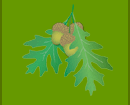 |
 |

|
|
|
 |
Paintings
Afrotropic

All paintings © Copyright EqualEarth.com on behalf of Van Xilef.
Cause for Concern in Africa
|
Afrotropics
•
Tropical and Subtropical Grasslands, Savannas, and Shrublands
|  |  |
West Sudanian savanna
Human activities have reduced, degraded, and fragmented this ecoregion. Trees are cut for wood and charcoal, and grasses are overgrazed by livestock. In addition, hunting--both commercial and subsistence--has eliminated many of the large mammals from large parts of this ecoregion. Migratory birds, which depend on seasonal wetlands, are at risk as these wetlands are polluted or drained or flooded by water storage projects.
| | Download in full size (Paypal). | | | |
|
Painting 0051 | National Geographic's Wildworld |
|
Afrotropics
•
Tropical and Subtropical Grasslands, Savannas, and Shrublands
|  |  |
Western Congolian forest-savanna mosaic
Major urban centers, such as Kinshasa and Brazzaville, hold human populations that still depend on the forest for resources such as bushmeat and wood for construction. The Congo River and local roads provide easy access to the forest. In more rural areas, vegetation is often converted to agriculture. But perhaps the biggest threat of all has been civil wars plaguing Angola, the DRC, and the Republic of Congo. These wars produce massive movements of refugees and devastate the environment.
| | Download in full size (Paypal). | | | |
|
Painting 0052 | National Geographic's Wildworld |
|
Afrotropics
•
Tropical and Subtropical Grasslands, Savannas, and Shrublands
|  |  |
Western Zambezian grasslands
Local control of this ecoregion through traditional practices ended in 1972 when the lands were declared national parks, a management change that ironically has caused many problems. The traditional importance of preserving this land has waned as local people have became less involved in the management of the land. Poaching and hunting have increased, uncontrolled burning of pastureland is disrupting bird nesting cycles, and long-time residents report decreases in the populations of useful plants and animals.
| | Download in full size (Paypal). | | | |
|
Painting 0053 | National Geographic's Wildworld |
|
Afrotropics
•
Tropical and Subtropical Grasslands, Savannas, and Shrublands
|  |  |
Zambezian and Mopane woodlands
Despite the fact that about half of this ecoregion is protected, a steadily growing human population, demanding more land and other finite resources, continues to pose a significant threat to the ecosystem. Some protected areas are still occupied by veterans of Zimbabwe's war of independence, resulting in rampant poaching, cutting of trees, and clearing of land for cultivation. Conservancies in Zimbabwe contain a significant proportion of the world's black rhino population. Many of the animals in this region are threatened by illegal hunting. For example, black rhinos are killed for their horns. And predators such as wild dogs are killed by farmers and ranchers who view them as pests. Ranching is a threat to native wildlife in other ways as well. Not only does it displace native ungulates, but fences put up to keep cattle in also impede the movements of migratory animals such as elephants and wildebeest. Yet another growing threat to this region is the invasion of alien plant species, which cover up to 20 percent of the land area in some places.
| | Download in full size (Paypal). | | | |
|
Painting 0054 | National Geographic's Wildworld |
|
Afrotropics
•
Tropical and Subtropical Grasslands, Savannas, and Shrublands
|  |  |
Zambezian Baikiaea woodlands
Because it is sparsely settled and so dry, much of this ecoregion has not been modified or fragmented. Close to eight percent of the region lies in protected areas. The greatest threats to the ecoregion are logging, frequent wildfires, poaching, land clearing for agriculture, unregulated tourism, and spraying for tsetse flies, which has been known to affect birds and other animals.
| | Download in full size (Paypal). | | | |
|
Painting 0055 | National Geographic's Wildworld |
|
Afrotropics
•
Temperate Grasslands, Savannas, and Shrublands
|  |  |
Al Hajar Al Gharbi montane woodlands
Throughout the Al Hajar range, vegetation is threatened by heavy grazing by goats, domesticated camels, and feral donkeys. Housing developments, road building, and mining all threaten the native habitats. The Arabian tahr is threatened by competition from domestic goats. And illegal hunting, while on the decline, has historically reduced many populations, including the Arabian leopard, which is now extinct from this region.
| | Download in full size (Paypal). | | | |
|
Painting 0056 | National Geographic's Wildworld |
|
Afrotropics
•
Temperate Grasslands, Savannas, and Shrublands
|  |  |
Amsterdam and Saint-Paul Islands temperate grasslands
A variety of introduced species are causing problems for the native species in this ecoregion. Domestic cattle graze on native plants and trample sea bird eggs. Cats and introduced rats also threaten native species by feeding on roots, seeds, eggs and the breeding birds themselves. Introduced plants such as thistle are causing problems by crowding out native plants.
| | Download in full size (Paypal). | | | |
|
Painting 0057 | National Geographic's Wildworld |
|
Afrotropics
•
Temperate Grasslands, Savannas, and Shrublands
|  |  |
Tristan Da Cunha-Gough Islands shrub and grasslands
Grazing of introduced domestic animals on the islands has resulted in habitat loss, particularly on Tristan da Cunha, since it is the only permanently inhabited island out of the four. Although the population totals less than 300 people, livestock are carefully managed to prevent further damage. Each family is allowed 2 cows and 7 sheep that they graze in a designated part of the island. Introduced species of plants also threaten to upset the islands' delicate ecosystems, and although strict measures are taken to try to prevent introductions, seagoing and migratory birds can still introduce seeds through their feces. Gough Island is a nature preserve and world heritage site, which offers it protection. Inaccessible Island is also a nature reserve, although it is not strictly monitored.
| | Download in full size (Paypal). | | | |
|
Painting 0058 | National Geographic's Wildworld |
|
Afrotropics
•
Flooded Grasslands and Savannas
|  |  |
East African halophytics
Pollution from sewage, pesticides, and heavy metals threaten the water quality of several of the lakes. Grazing, mining, and logging have altered large portions of the landscape within the catchments of these lakes. Agriculture is also common, and in areas with less salt content the water used for irrigation competes with water needed for the natural functioning of the lakes.
| | Download in full size (Paypal). | | | |
|
Painting 0059 | National Geographic's Wildworld |
|
Afrotropics
•
Flooded Grasslands and Savannas
|  |  |
Etosha Pan halophytics
Most of the pans are located within Etosha National Park and are therefore protected. Large numbers of tourists visit the pans each year. Unfortunately, anti-malarial pesticides, including DDT, have entered the food chain and could reach lethal levels unless they are banned from use soon. The habitats of the area are also threatened by long-term climatic drying due to global climate change and by any future diversion of the water that flows into the area via the seasonal streams.
| | Download in full size (Paypal). | | | |
|
Painting 0060 | National Geographic's Wildworld |
All paintings © Copyright EqualEarth.com on behalf of Van Xilef.
Afrotropic
|
 |
 |
|
 |
|

